Colombia grapples with one of the world's largest internally displaced populations, stemming from a trifecta of causes: conflict and violence driven by non-state armed groups and criminal organizations, recurrent natural disasters, and an influx of migrants and refugees from neighboring Venezuela. In response, communities have erected settlements across the country, where living conditions are often precarious and humanitarian needs are acute.
Community-Empowered Information Management in Colombian Settlements
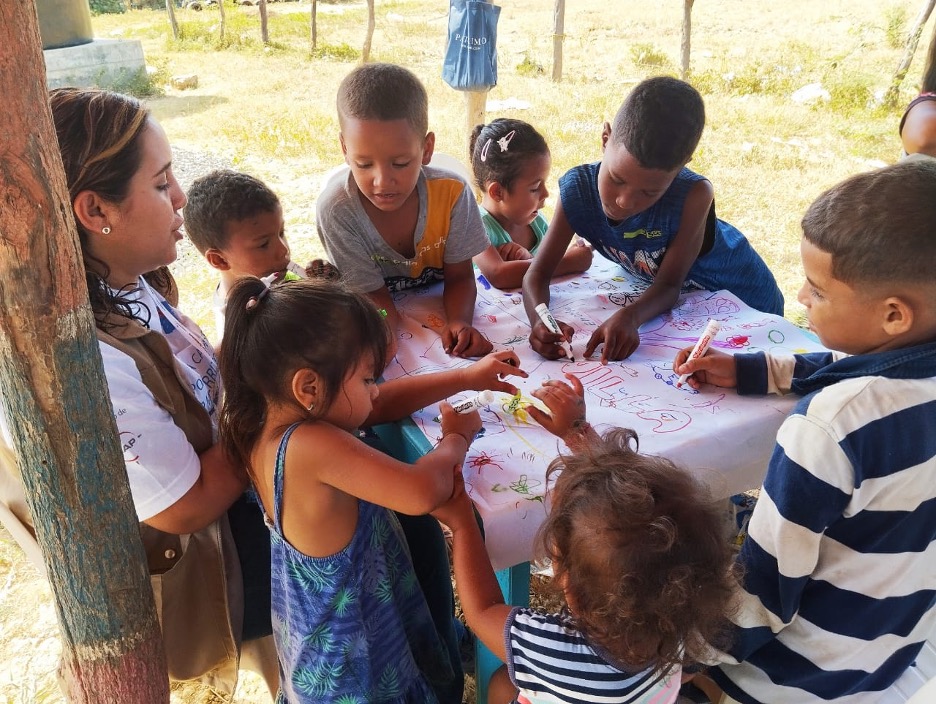
Training workshop with the community, Cucuta, Norte de Santander, (iMMAP Inc. Colombia/Gabriel Clavijo)
To better understand and address the needs of these communities, iMMAP Inc. has developed its own settlement-based information management approach, placing the affected communities at the forefront. By fostering a sense of ownership and drawing upon their expertise and direct experience, our approach aims to optimize needs assessments, refine local response monitoring, and ensure the full inclusion of affected communities.
Drawing on the proven principles of the Settlement Approach and Open Street Maps tools, this community-centric information management strategy has been under development for over three years. Since its inception, the focus has been on building a solid methodology that emphasizes community ownership and participation. This initial phase involved meticulous development to ensure the approach effectively gathers, analyzes, and disseminates information that reflects the specific needs of each settlement.
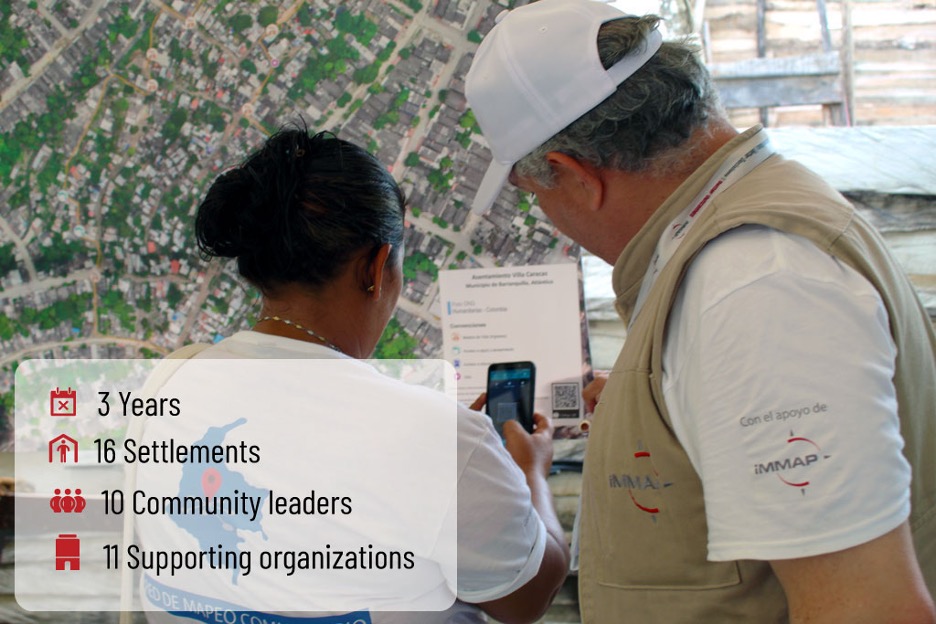
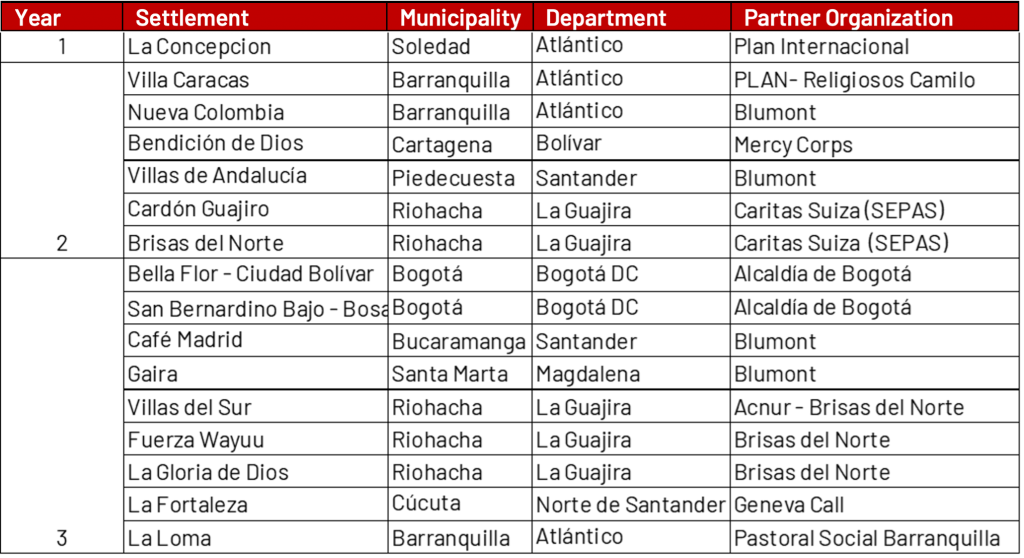
List of settlements
Our methodology of information management in humanitarian settlements comprises six key steps, which we call “moments”:
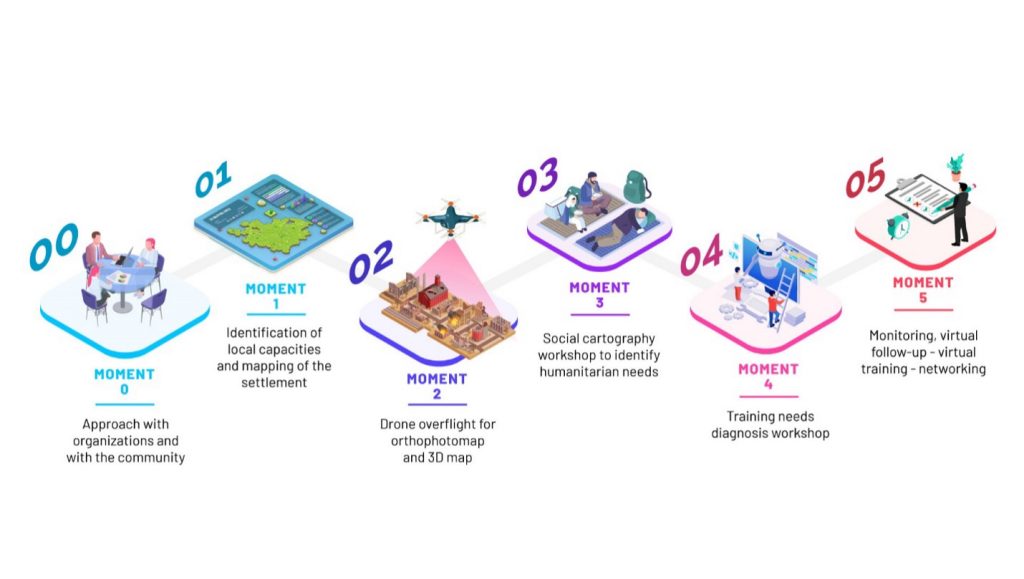
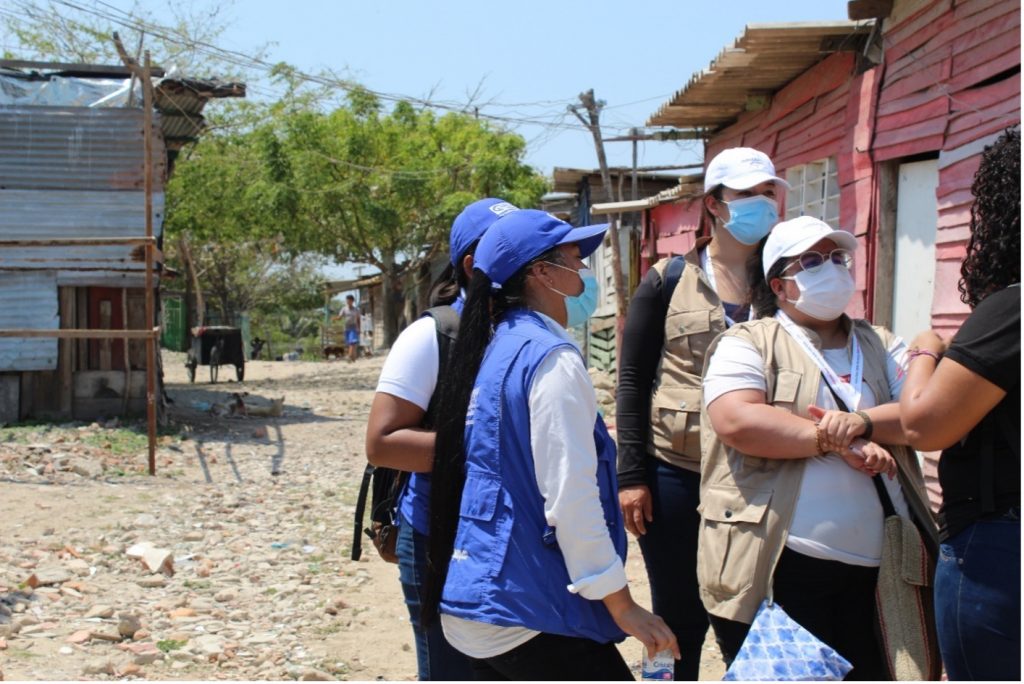
Initial visit to settlement, Riohacha, La Guajira, (iMMAP Inc. Colombia/ Stephanie Pinilla)
This initial stage kicks off with the process of establishing communication with organizations present in the humanitarian settlements. A detailed explanation of the project's objectives and methodology is shared in the meetings with the interested actors, in this case, NGO Forum organizations, to foster collaboration and secure their commitments throughout the project
To ensure everyone is on the same page from the outset, a dedicated community engagement session is held where the methodology is presented in a clear and accessible manner. This initial phase also ensures widespread understanding by distributing digital flyers. By putting communities at the heart of the approach from the very beginning, this moment fosters a sense of ownership and empowers them to take the lead, ultimately strengthening their long-term capacity and protection in the face of humanitarian crises.
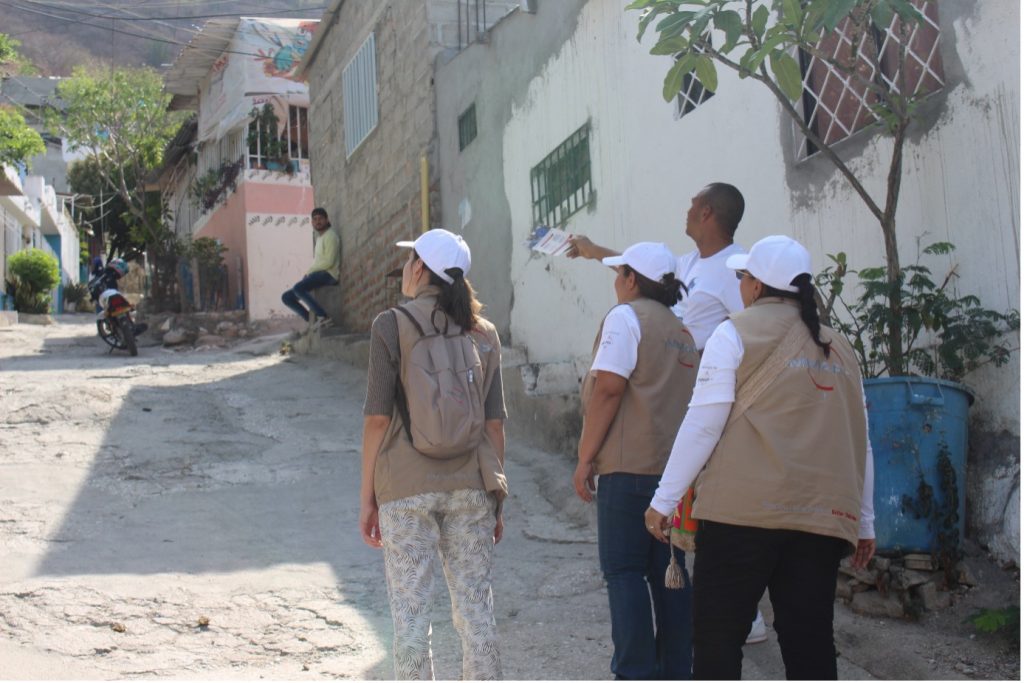
Tour of the community in the company of the settlement's community leader, Santa Marta, Magdalena, (iMMAP Inc. Colombia/Gabriel Clavijo)
Moment One involves a fact-finding mission of the settlement with local organizations and community leaders. During this tour, georeferenced forms are used to gather information on the community's existing capacities and solutions. Additionally, technological tools like Osmand are employed to create a base map of the settlement, facilitating the georeferencing of internal roads and the settlement's boundary. This stage is instrumental in building a comprehensive picture of the settlement’s current situation and available resources.
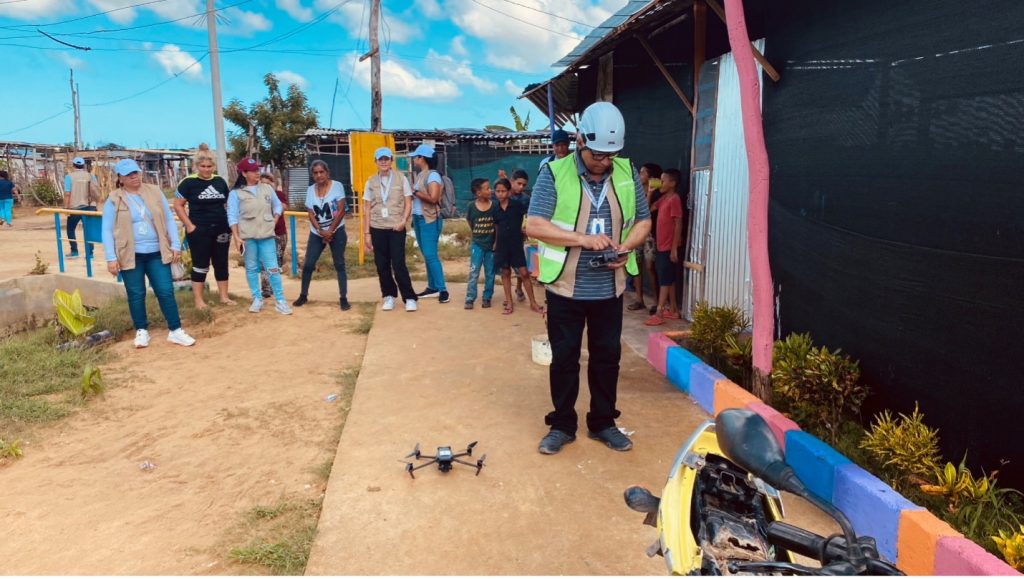
Drone flyover, Rioacha, La Guajira, (iMMAP Inc. Colombia/Gabriel Clavijo)
The drone flyover is an important milestone in the process, as it provides high-resolution aerial images of the settlement. In collaboration with the community leaders, strategic flight paths are chosen to ensure the best coverage. These images are then processed to create essentially corrected and geo-referenced view of the Earth's surface. These orthomosaics are essential to understand the spatial distribution of resources and planning accurate and efficient settlement interventions.

Training workshop with the community, Barranquilla, Atlántico, (iMMAP Inc. Colombia/Gabriel Clavijo)

Training workshop with the community, Cúcuta, Norte de Santander, Photo: iMMAP Inc. Colombia - Gabriel Clavijo)
At this stage, a participatory workshop is held with the community to analyze a three-dimensional model of the settlement based on the orthomosaic. This exercise aims to identify and map the most pressing humanitarian needs and the key sectors of humanitarian intervention. Through interactive activities, the community takes ownership of the model and engages in open conversations regarding local needs and priorities. This stage is critical to ensure that humanitarian interventions are relevant and tailored to the specific needs of the community.

Training workshop with the community, Barranquilla, Atlántico, (iMMAP Inc. Colombia/Gabriel Clavijo)
Following the social needs mapping takes an in-person approach to gauge the community's preparedness for online training programs. This assessment focuses on identifying barriers and opportunities related to online learning, such as access to technology and internet quality. By gathering this information, the project can design tailored virtual training programs that meet the specific needs and context of the community.
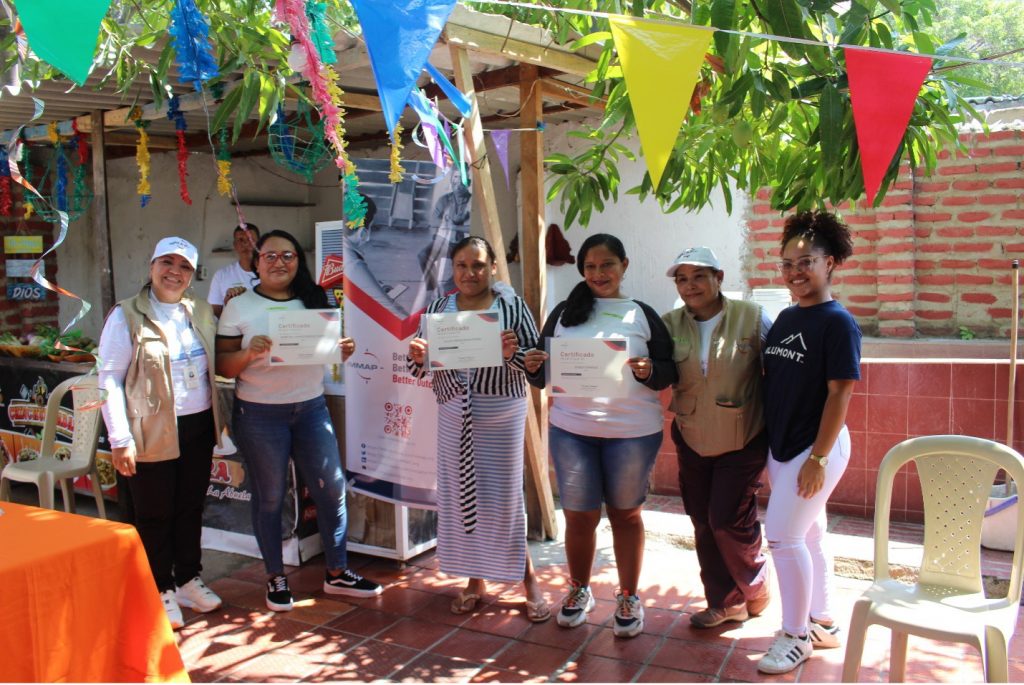
Issuance of certificates to community members who completed the training. Santa Marta,Magdalena, (iMMAP Inc. Colombia/Gabriel Clavijo)
The fifth moment leverages technology to cultivate information management skills and knowledge of essential humanitarian management tools. A virtual classroom facilitated through a chatbot, provides participants with access to interactive educational resources.
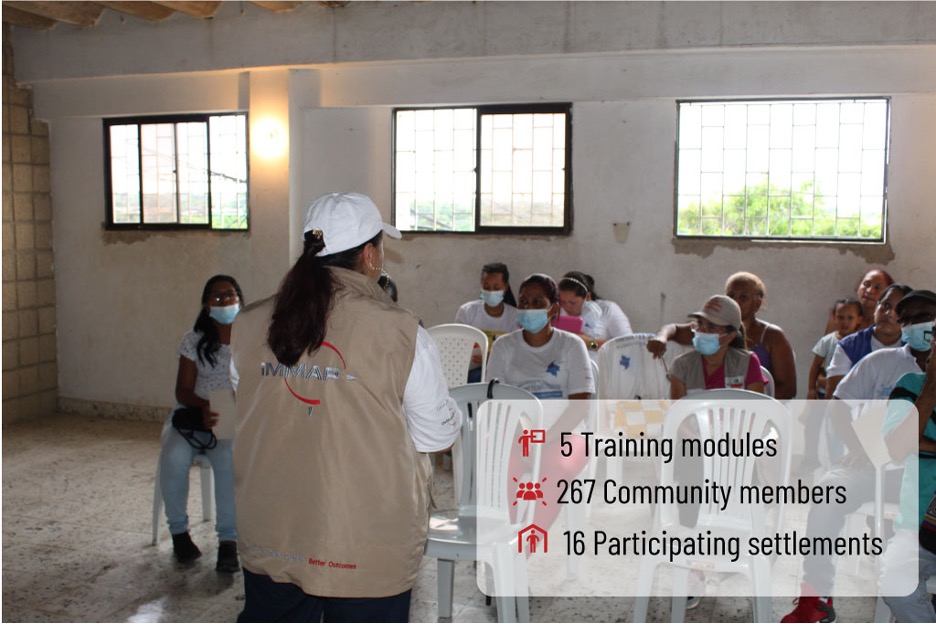
This virtual classroom fosters a community of practice, where representatives from different settlements can share knowledge, collaborate on solutions, and ensure the long-term sustainability of these initiatives.
Our approach transcends mere data collection. By empowering communities through virtual training and collaborative networks, we actively foster resilience, enhance their participation in humanitarian efforts, and ultimately empowers informed decision-making. Through this approach, we strive not only to improve the humanitarian response but also to create lasting positive impacts within the communities we serve.
Our impact
Our primary goal was to revolutionize the dynamics of humanitarian intervention, ensuring that aid is more responsive and tailored to the real needs and demands of the communities it serves, rooted in tangible evidence.
This comprehensive approach has enabled a profound understanding of the opportunities and challenges faced by the inhabitants of these territories, laying the groundwork for targeted interventions.
"With the tools we've received, we're now able to identify our needs and risks when other organizations come to assist. It's made it much simpler for us to articulate our requirements within the community."
This collaborative process, supported by humanitarian organizations and community leaders, has also established a crucial foundation for knowledge transfer to other communities in need through the Community Mapping Network, fostering connectivity among them.
"These resources we've acquired aren't just tools to express our needs; they're also a showcase of our potential. Everything we've gained, the knowledge and tools we've never had access to before, we're now putting into action”, detailed Jairo Ibarra from the Brisas del Norte Foundation, a local organization which has actively participated in this process by assisting in two informal settlements and is now disseminating this valuable information to neighboring communities.
As a result, communities can now access and utilize vital information within their settlements, enabling them to articulate their needs, risks, and untapped potential to other humanitarian organizations and institutions. This enhanced dialogue has paved the way for the development of future projects and the delivery of more effective humanitarian assistance, fostering a collaborative approach to community development and resilience-building.
